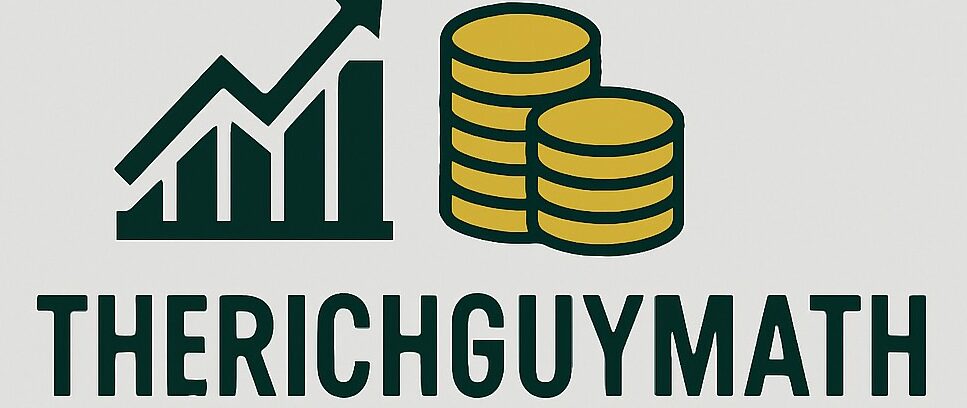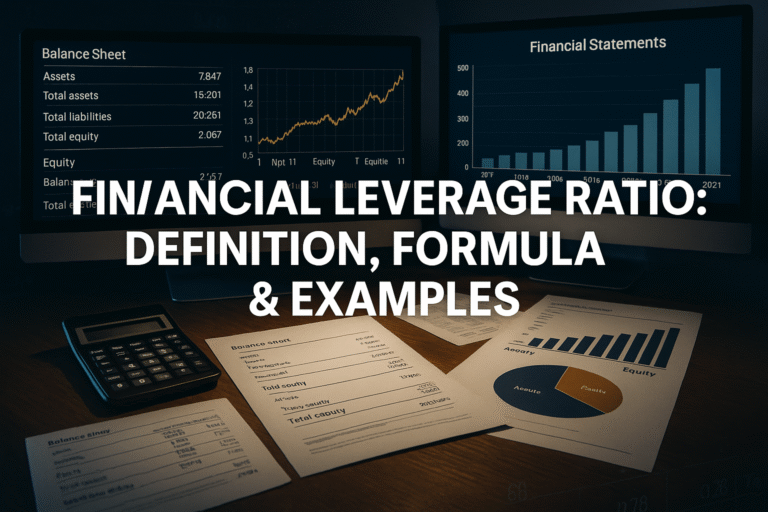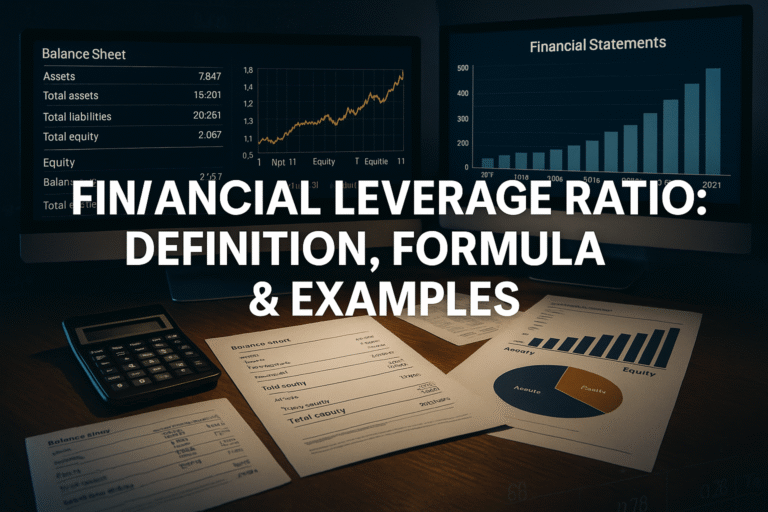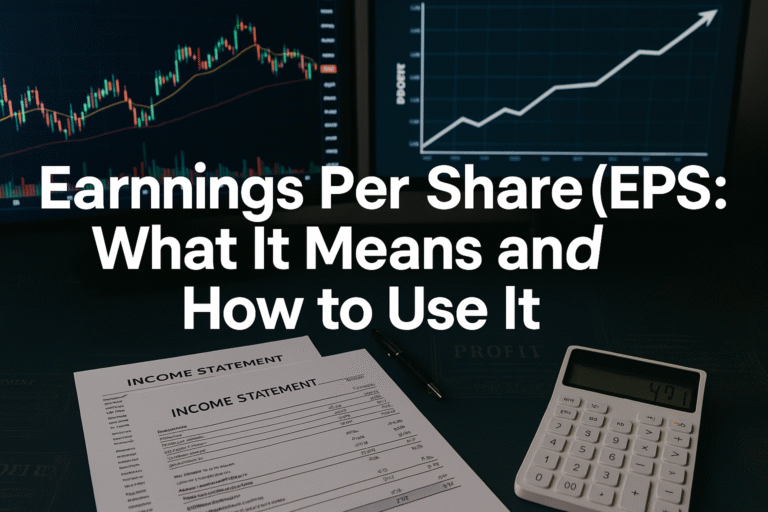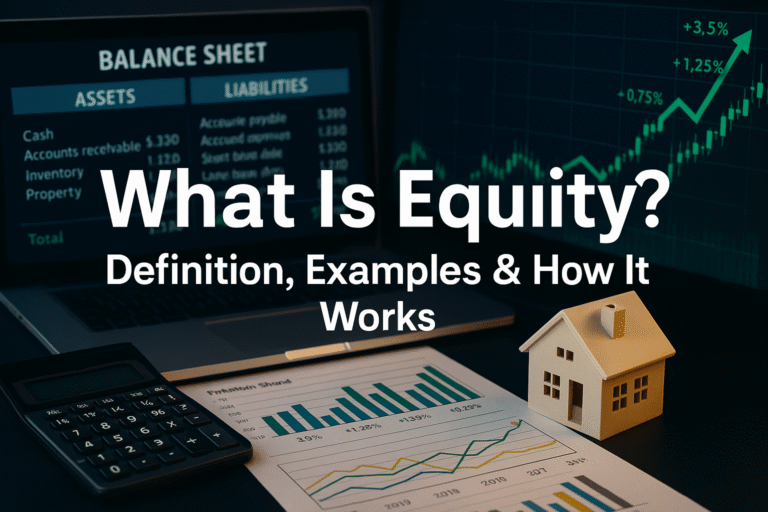How to start investing as a beginner can feel like navigating a maze blindfolded, overwhelming, confusing, and slightly terrifying. But here’s the truth: every successful investor started exactly where you are right now. In 2025, with technology making markets more accessible than ever, there’s never been a better time to take control of your financial future. This comprehensive guide will walk you through everything you need to know to start investing with confidence, even if you’ve never bought a single share in your life. Investopedia – Comprehensive financial education
Key Takeaways
- Start small: You don’t need thousands of dollars to begin investing; many platforms allow you to start with as little as $5
- Diversification is crucial: Spreading your investments across different assets reduces risk and protects your portfolio
- Set clear goals: Define what you’re investing in (retirement, house, education) to choose the right strategy
- Time is your advantage: The earlier you start, the more compound interest works in your favor
- Education pays dividends: Understanding basic investing concepts will help you make smarter decisions and avoid costly mistakes
What Is Investing and Why Should You Start?
Investing means putting your money into assets like stocks, bonds, or real estate with the expectation that they’ll grow in value over time. Unlike saving, where your money sits in a bank account earning minimal interest, investing allows your money to work for you and potentially generate significant returns.
The average annual return of the stock market has historically been around 10% before inflation, according to data from the S&P 500. Compare that to the average savings account interest rate of less than 1%, and the difference becomes clear. Over decades, this gap compounds dramatically, turning modest regular investments into substantial wealth.
Starting early is perhaps the most powerful advantage you can give yourself. A 25-year-old who invests $200 monthly until age 65 at an 8% annual return will accumulate approximately $700,000. Wait until 35 to start, and that same monthly investment grows to only about $300,000, less than half the amount for just a 10-year delay.
Understanding Your Investment Goals and Timeline
Before you invest a single dollar, you need to answer one critical question: What are you investing in?
Your investment goals will shape every decision you make, from which accounts to open to which assets to buy. Here are the most common investment objectives:
Short-Term Goals (1-3 years)
- Emergency fund building
- Down payment for a car
- Vacation savings
- Wedding expenses
Recommended approach: High-yield savings accounts, money market funds, or short-term bonds. The stock market is too volatile for the money you’ll need soon.
Medium-Term Goals (3-10 years)
- House down payment
- Starting a business
- Major home renovation
- Child’s education fund
Recommended approach: Balanced portfolio with 40-60% stocks and the remainder in bonds and stable assets.
Long-Term Goals (10+ years)
- Retirement
- Financial independence
- Generational wealth building
- Legacy planning
Recommended approach: Stock-heavy portfolio (70-90% equities) to maximize growth potential, as you have time to ride out market volatility.
Understanding why the stock market goes up over the long term helps you stay committed during market downturns.
Step 1: Build Your Financial Foundation
Investing for beginners starts with ensuring you’re financially ready. Jumping into the market without a solid foundation is like building a house on sand, risky and potentially devastating.
Create an Emergency Fund First
Before investing, save 3-6 months of living expenses in a readily accessible account. This safety net ensures you won’t need to sell investments at a loss during emergencies. If you lose your job or face unexpected medical bills, this fund protects your investment strategy from derailment.
Pay Off High-Interest Debt
Credit card debt charging 18-25% interest will always outpace investment gains. If you’re carrying high-interest debt, prioritize paying it off before investing aggressively. However, low-interest debt like mortgages or student loans (typically under 5%) can coexist with investing.
Budget for Regular Contributions
Successful investing requires consistency. Review your monthly income and expenses to determine how much you can realistically invest each month. Even $50-100 monthly can grow substantially over time. The key is making it automatic and sustainable.
| Financial Milestone | Priority Level | Action Required |
|---|---|---|
| Emergency Fund (3-6 months) | ⭐⭐⭐ Critical | Save before investing |
| High-Interest Debt (>10%) | ⭐⭐⭐ Critical | Pay off before investing |
| Employer 401(k) Match | ⭐⭐⭐ Critical | Contribute to get full match |
| Medium-Interest Debt (5-10%) | ⭐⭐ Important | Balance with investing |
| Low-Interest Debt (<5%) | ⭐ Optional | Can invest while paying minimum |
Step 2: Choose the Right Investment Account
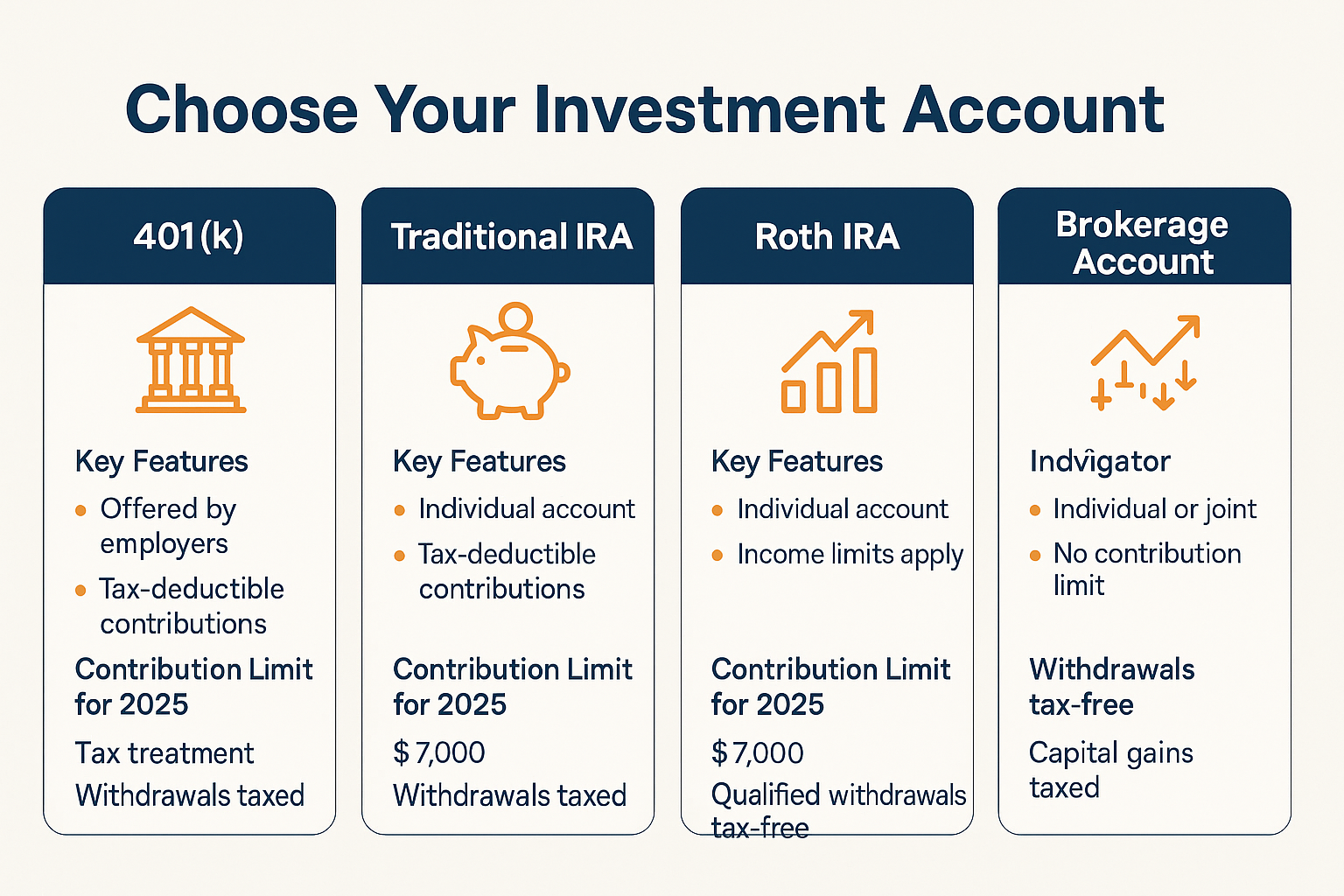
The type of account you choose affects your taxes, withdrawal flexibility, and investment options. Here are the main account types for beginners:
Tax-Advantaged Retirement Accounts
401(k) or 403(b): Employer-sponsored retirement plans that often include matching contributions (free money!). Contributions reduce your taxable income, and investments grow tax-deferred until retirement.
- Contribution limit (2025): $23,500 annually ($31,000 if 50+)
- Best for: Anyone with an employer match available
- Pros: Tax deduction, employer match, automatic payroll deductions
- Cons: Limited investment options, early withdrawal penalties
Traditional IRA: An Individual retirement account offering tax-deductible contributions and tax-deferred growth.
- Contribution limit (2025): $7,000 annually ($8,000 if 50+)
- Best for: Those without employer retirement plans or seeking additional tax deductions
- Pros: Tax deduction now, wide investment choices
- Cons: Taxes owed on withdrawals, required minimum distributions at 73
Roth IRA: Contributions are made with after-tax dollars, but qualified withdrawals in retirement are completely tax-free.
- Contribution limit (2025): $7,000 annually ($8,000 if 50+)
- Best for: Younger investors in lower tax brackets who expect higher income in retirement
- Pros: Tax-free growth, tax-free withdrawals, no required distributions
- Cons: No immediate tax deduction, income limits apply
Taxable Brokerage Accounts
These standard investment accounts offer complete flexibility, no contribution limits, no age restrictions, and no withdrawal penalties. However, you’ll pay taxes on dividends and capital gains.
- Best for: Goals before retirement age, investors maxing out retirement accounts
- Pros: Complete flexibility, unlimited contributions, access anytime
- Cons: No tax advantages, capital gains taxes apply
For most beginners, the optimal strategy is:
- Contribute enough to your 401(k) to get the full employer match
- Max out a Roth IRA
- Return to max out your 401(k)
- Open a taxable brokerage account for additional investing
Step 3: Select a Brokerage Platform
How to start investing as a beginner in 2025 means choosing from dozens of excellent brokerage platforms. The best choice depends on your priorities, but here are the top options:
Best Overall for Beginners: Fidelity & Charles Schwab
- No account minimums
- Zero-commission stock and ETF trades
- Excellent educational resources
- Robust mobile apps
- Strong customer service
- Wide investment selection
Best for Hands-Off Investing: Betterment & Wealthfront
- Automated portfolio management (robo-advisors)
- Low fees (0.25% annually)
- Automatic rebalancing and tax-loss harvesting
- Great for those who want simplicity
- Minimum investment: $0-500
Best for Active Traders: Robinhood & Webull
- User-friendly mobile-first design
- Fractional shares available
- No account minimums
- Limited research tools compared to traditional brokers
When selecting a platform, consider:
- Fees: Look for $0 commission trades and low expense ratios
- Account minimums: Many platforms now have $0 minimums
- Investment options: Ensure they offer the assets you want
- Educational resources: Quality learning materials for beginners
- User interface: Easy-to-navigate platform you’ll actually use
Step 4: Understand Basic Investment Types
How to start investing as a beginner requires familiarity with the main asset classes. You don’t need to become an expert immediately, but understanding these basics is essential.
Stocks (Equities)
When you buy stock, you’re purchasing partial ownership in a company. Stocks offer the highest growth potential but also the most volatility. Individual stocks require research and carry higher risk; if one company fails, you could lose your entire investment in that stock.
Example: Buying Apple stock makes you a partial owner of Apple. If the company grows and profits increase, your shares typically increase in value.
Bonds (Fixed Income)
Bonds are loans you make to governments or corporations that pay you interest. They’re generally safer than stocks but offer lower returns. Bonds provide stability and income, making them ideal for balancing riskier stock investments.
Example: A 10-year U.S. Treasury bond pays you a fixed interest rate for 10 years, then returns your principal.
Mutual Funds
Mutual funds pool money from many investors to buy a diversified collection of stocks, bonds, or other assets. A professional manager selects the investments. Mutual funds typically have higher fees (expense ratios) than ETFs.
Exchange-Traded Funds (ETFs)
ETFs are similar to mutual funds but trade on exchanges like stocks. They typically track an index (like the S&P 500) and have lower fees than actively managed mutual funds. ETFs are often the best choice for beginners because they offer instant diversification at low cost.
Understanding the difference between index funds vs stocks can help you make informed decisions about which investments suit your goals.
Real Estate Investment Trusts (REITs)
REITs allow you to invest in real estate without buying property directly. They own and operate income-producing real estate and must distribute 90% of taxable income to shareholders as dividends.
Step 5: Build Your Investment Portfolio
Portfolio construction is where strategy meets action. For beginners, simplicity beats complexity every time.
The Index Fund Approach (Recommended for Beginners)
Instead of picking individual stocks, invest in low-cost index funds that track the entire market. This strategy, championed by Warren Buffett, offers:
- Instant diversification: One fund can hold hundreds or thousands of companies
- Low fees: Expense ratios as low as 0.03% annually
- Proven results: Index funds outperform most actively managed funds over time
- Simplicity: No need to research individual companies
Simple Three-Fund Portfolio:
- Total U.S. Stock Market Index (60%): Vanguard VTI or Fidelity FSKAX
- Total International Stock Index (30%): Vanguard VXUS or Fidelity FTIHX
- Total U.S. Bond Market Index (10%): Vanguard BND or Fidelity FXNAX
This allocation provides global diversification across thousands of companies with just three funds.
Asset Allocation by Age
A common rule of thumb: Subtract your age from 110 to determine your stock allocation percentage.
- Age 25: 85% stocks, 15% bonds
- Age 40: 70% stocks, 30% bonds
- Age 60: 50% stocks, 50% bonds
Younger investors can tolerate more volatility because they have decades to recover from market downturns. As you approach retirement, shifting toward bonds preserves capital and reduces risk. Mr. Money Mustache – Financial independence and investing
Target-Date Funds: The Easiest Option
If choosing your own allocation feels overwhelming, consider a target-date fund. These funds automatically adjust their asset allocation as you approach your target retirement year, becoming more conservative over time.
Example: A 2060 Target-Date Fund is designed for someone retiring around 2060. It starts stock-heavy and gradually shifts toward bonds as 2060 approaches.
Step 6: Make Your First Investment
You’ve done the preparation, now it’s time to take action. Here’s exactly how to make your first investment:
Step-by-Step Process
- Fund your account: Transfer money from your bank to your brokerage account (typically takes 3-5 business days)
- Search for your chosen investment: Use the ticker symbol (e.g., VTI for Vanguard Total Stock Market ETF)
- Decide how much to invest: Start with whatever you’re comfortable with, even $50 is perfectly fine
- Choose order type:
- Market order: Buys immediately at the current price (best for beginners)
- Limit order: Buys only if the price reaches your specified amount
- Review and submit: Double-check everything before confirming
- Set up automatic investments: Schedule recurring purchases to invest consistently without thinking about it
The Rich Guy Math blog – Smart money strategies and investing insights
Overcoming First-Time Jitters
It’s completely normal to feel nervous about your first investment. Remember:
- You don’t need to invest all your money at once
- Start small and increase contributions as you gain confidence
- Market fluctuations are normal; focus on long-term goals
- You can always adjust your strategy as you learn
Understanding the cycle of market emotions helps you recognize that anxiety is a natural part of investing, especially when starting.
Step 7: Develop Smart Investing Habits
How to start investing as a beginner isn’t just about the initial purchase; it’s about building sustainable habits that compound over time.
Automate Everything
Set up automatic transfers from your checking account to your investment account on payday. Automation removes emotion and ensures consistency. You can’t forget to invest or talk yourself out of it when it happens automatically.
Dollar-Cost Averaging
Instead of trying to time the market, invest fixed amounts regularly regardless of market conditions. This strategy, called dollar-cost averaging, means you’ll:
- Buy more shares when prices are low
- Buy fewer shares when prices are high
- Reduce the impact of volatility
- Remove the stress of timing decisions
Reinvest Dividends
When stocks or funds pay dividends, reinvest them automatically to purchase additional shares. This accelerates compound growth significantly over time. Most brokers offer automatic dividend reinvestment (DRIP) at no cost.
Learning about dividend investing can help you understand how to generate passive income from your portfolio.
Rebalance Annually
Over time, your portfolio will drift from its target allocation as different assets grow at different rates. Once or twice yearly, rebalance by selling overweighted assets and buying underweighted ones to maintain your desired allocation.
Increase Contributions Regularly
Commit to increasing your investment contributions whenever you receive a raise, bonus, or pay off debt. Even small increases compound significantly over decades.
Common Beginner Investing Mistakes to Avoid
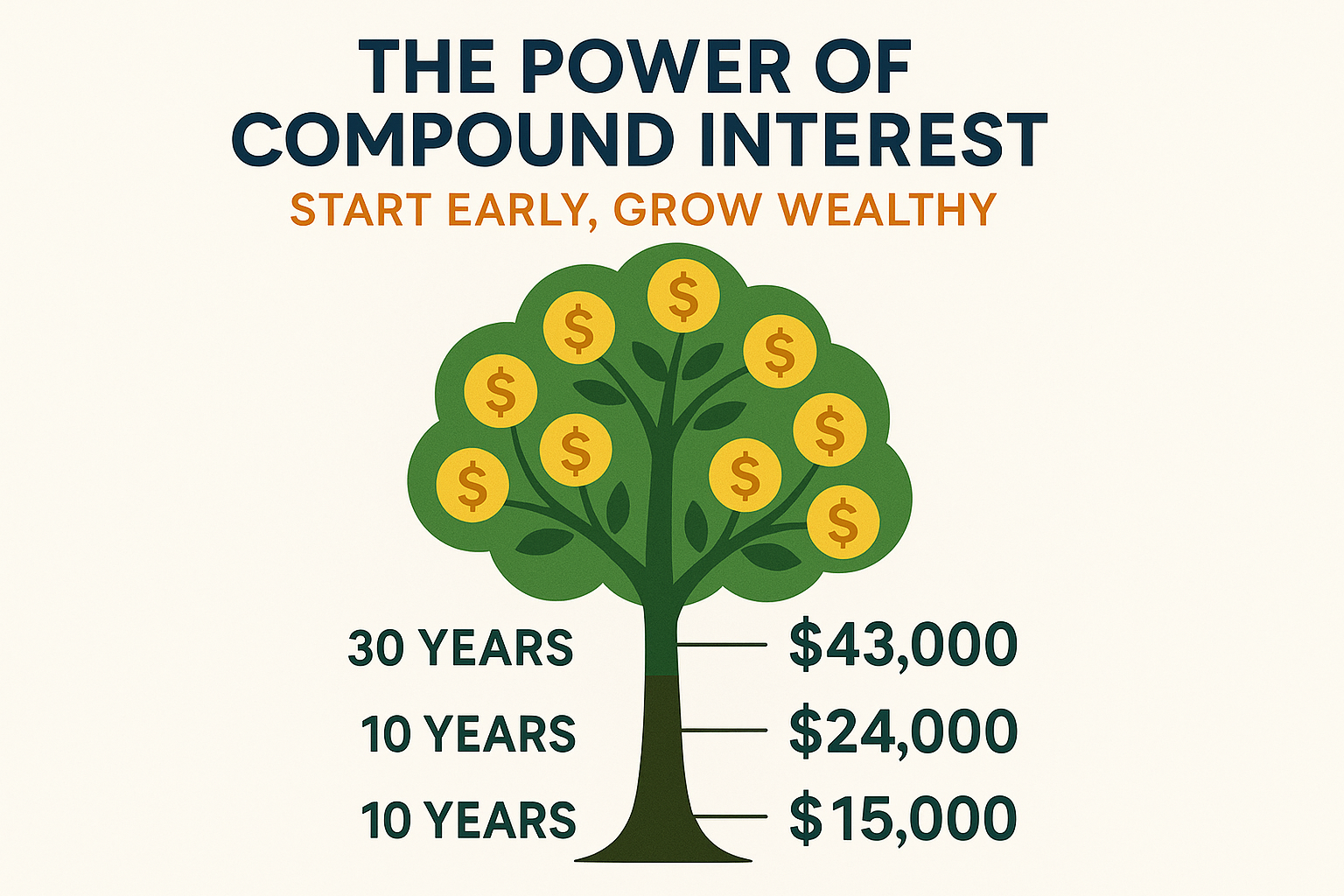
Learning what NOT to do is just as important as learning what to do. Avoid these costly mistakes:
Trying to Time the Market
Countless studies show that timing the market consistently is virtually impossible. Time IN the market beats timing the market. Missing just the 10 best days in the market over 30 years can cut your returns in half.
Chasing Hot Stocks
By the time you hear about a “can’t-miss” stock, institutional investors have already acted. Chasing trends and meme stocks usually leads to buying high and selling low, the opposite of successful investing.
Panic Selling During Downturns
Market corrections and bear markets are normal, healthy parts of the investment cycle. Selling when markets drop locks in losses and prevents you from participating in the recovery. Every major market downturn in history has been followed by recovery and new highs.
Ignoring Fees
A seemingly small 1% fee difference can cost hundreds of thousands of dollars over a lifetime. A $100,000 investment growing at 7% for 30 years becomes $761,000. At 6% (after 1% fees), it becomes only $574,000a $ a 187,000 difference!
Not Diversifying
Putting all your money in one stock, one sector, or even one country exposes you to unnecessary risk. Diversification is the only free lunch in investing that reduces risk without reducing expected returns.
Investing Money You’ll Need Soon
The stock market is volatile in the short term. Never invest money you’ll need within 3-5 years. Emergency funds and short-term savings belong in high-yield savings accounts, not the stock market.
Tax Considerations for New Investors
Understanding basic tax implications helps you keep more of your investment gains.
Capital Gains Taxes
When you sell an investment for more than you paid, you owe capital gains tax on the profit:
- Short-term capital gains (held less than 1 year): Taxed as ordinary income (10-37% depending on your tax bracket)
- Long-term capital gains (held more than 1 year): Taxed at preferential rates (0%, 15%, or 20% depending on income)
Strategy: Hold investments for at least one year when possible to benefit from lower long-term capital gains rates. Bogleheads Forum – Community of index fund investors
Dividend Taxes
Dividends are taxed differently based on whether they’re qualified or ordinary:
- Qualified dividends: Taxed at long-term capital gains rates (0-20%)
- Ordinary dividends: Taxed as ordinary income (10-37%)
Exploring high dividend stocks can be part of your strategy, but understand the tax implications.
Tax-Loss Harvesting
If you have investments that have lost value, you can sell them to offset gains from other investments, reducing your tax bill. This strategy, called tax-loss harvesting, is particularly valuable in taxable accounts.
Tax-Advantaged Account Benefits
This is why retirement accounts are so powerful:
- Traditional IRA/401(k): Contributions reduce current taxable income; pay taxes on withdrawals in retirement
- Roth IRA/401(k): No current tax deduction, but qualified withdrawals are completely tax-free
- No annual tax reporting: Gains and dividends in retirement accounts aren’t taxed until withdrawal (or never, for Roth accounts)
Resources for Continuing Your Education
Investing for beginners is a journey, not a destination. Continue learning through these trusted resources:
Recommended Books
- “The Simple Path to Wealth” by JL Collins
- “A Random Walk Down Wall Street” by Burton Malkiel
- “The Bogleheads’ Guide to Investing” by Taylor Larimore
- “The Intelligent Investor” by Benjamin Graham
Podcasts
- “The Money Guy Show”
- “ChooseFI”
- “Afford Anything”
- “BiggerPockets Money”
Online Courses
- Khan Academy – Free investing and finance courses
- Coursera – University-level finance courses
- Your broker’s education center – Most offer free webinars and tutorials
Understanding how banks work can also provide valuable context for your overall financial strategy.
When to Consider Professional Help
While DIY investing works wonderfully for most beginners, certain situations may warrant professional guidance:
Consider a Financial Advisor If:
- You have a complex financial situation (business ownership, inheritance, multiple properties)
- You’re approaching retirement and need distribution planning
- You lack time or interest in managing investments yourself
- You need comprehensive financial planning beyond just investing
- You have behavioral challenges that lead to poor investment decisions
Types of Advisors
- Fee-only fiduciary: Paid only by you, legally required to act in your best interest (recommended)
- Fee-based: Receives fees from you and commissions from products (potential conflicts of interest)
- Commission-based: Paid through product commissions (highest conflict of interest)
Always work with a fiduciary advisor who is legally obligated to put your interests first. Ask directly: “Are you a fiduciary 100% of the time?”
Monitoring Your Investments Without Obsessing
Check your portfolio regularly, but not too frequently. Excessive monitoring leads to emotional decisions and stress.
Recommended Review Schedule
- Monthly: Review account balances and contributions
- Quarterly: Check overall performance and asset allocation
- Annually: Comprehensive review, rebalancing, and strategy adjustment
What to Monitor
- Are contributions happening automatically?
- Is your asset allocation still aligned with your goals?
- Have your financial goals or timeline changed?
- Are fees still competitive?
What NOT to Monitor
- Daily price fluctuations
- Short-term performance comparisons
- Financial news and market predictions
- What your friends/family are investing in
Discover additional smart ways to make passive income to complement your investment strategy.
Taking Action: Your First 30 Days
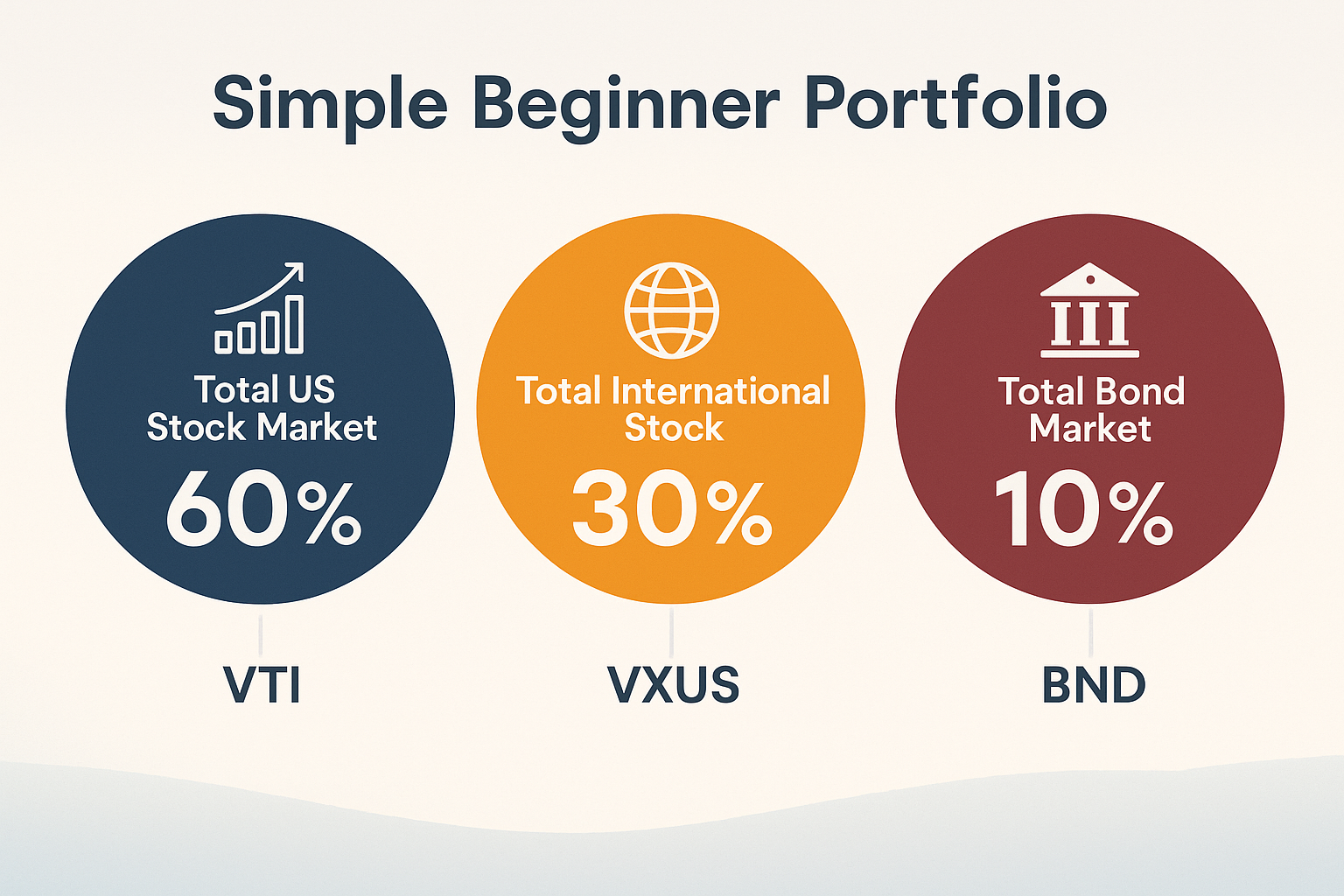
Here’s a concrete action plan for your first month of investing:
Week 1: Financial Foundation
- Calculate your monthly budget
- Verify you have an adequate emergency fund
- List all debts with interest rates
- Determine the monthly investment amount
Week 2: Account Setup
- Research and select a brokerage platform
- Open your chosen account(s)
- Complete all verification requirements
- Link your bank account
Week 3: Education and Strategy
- Read beginner investing resources
- Decide on your asset allocation
- Select specific funds or ETFs
- Set up automatic contributions
Week 4: Execute and Automate
- Make your first investment
- Enable automatic dividend reinvestment
- Schedule recurring investments
- Set calendar reminders for quarterly reviews
Conclusion
Investing for beginners doesn’t have to be complicated or scary. By following this step-by-step guide, you’ve learned everything needed to start building wealth through investing in 2025. The most important steps are:
- Build your financial foundation with an emergency fund and manageable debt
- Choose the right accounts to maximize tax advantages
- Start with simple, diversified investments like index funds
- Automate your contributions to ensure consistency
- Stay the course through market ups and downs
- Keep learning and refining your strategy over time
Remember, the best time to start investing was yesterday. The second-best time is today. You don’t need to be wealthy to start investing you start investing to become wealthy. Every successful investor began as a beginner, and the journey of a thousand miles begins with a single step.
Take action today. Open that account. Make that first investment. Your future self will thank you for the decision you make right now.
For more insights on making smart financial moves, continue exploring proven strategies that build long-term wealth.
Interactive Investment Calculator
“`html💰 Investment Growth Calculator
See how your money can grow over time with compound interest
FAQ
You can start investing with as little as $5-10 on most modern brokerage platforms. Many brokers offer fractional shares, allowing you to buy portions of expensive stocks. However, it’s recommended to have an emergency fund of 3-6 months of expenses before investing significant amounts.
Saving means putting money in low-risk accounts like savings accounts or CDs, where it grows slowly but safely. Investing means putting money into assets like stocks or bonds with higher growth potential but also higher risk. Savings are for short-term goals and emergencies; investing is for long-term wealth building.
It depends on the interest rate. If your student loans have high interest rates (above 6-7%), prioritize paying them off first. For lower interest rates, you can balance debt repayment with investing, especially if your employer offers a 401(k) match (which is free money you shouldn’t pass up).
Low-cost index funds or ETFs that track the total stock market are ideal for beginners. They provide instant diversification, require minimal research, have low fees, and historically outperform most actively managed funds over the long term.
Check your portfolio monthly to ensure contributions are happening, quarterly for a general review, and annually for rebalancing. Checking too frequently can lead to emotional decisions based on short-term volatility. Focus on long-term goals rather than daily price movements.
The best time to start investing is always as soon as possible. Trying to time the market is nearly impossible, even for professionals. Time in the market beats timing the market. If you’re concerned about market highs, use dollar-cost averaging by investing fixed amounts regularly over time.
Disclaimer
This article is for informational and educational purposes only and should not be construed as financial advice. Investing involves risk, including the potential loss of principal. Past performance does not guarantee future results. Before making any investment decisions, consider your financial situation, risk tolerance, and investment objectives. Consult with a qualified financial advisor or tax professional for personalized guidance. The author and publisher are not responsible for any financial decisions made based on the information provided in this article.
About the Author
Max Fonji is a financial educator and investment strategist with over 8 years of experience helping beginners navigate the world of investing. Having started his own investment journey with just $500, Max understands the challenges and fears that new investors face. His mission is to demystify investing and empower people to take control of their financial futures through clear, actionable guidance. Max’s straightforward approach has helped thousands of beginners confidently start their investment journeys and build wealth over time
